Creators, Makers, and Doers: Donald Winiecki
Posted on 2/23/16 by Arts & History
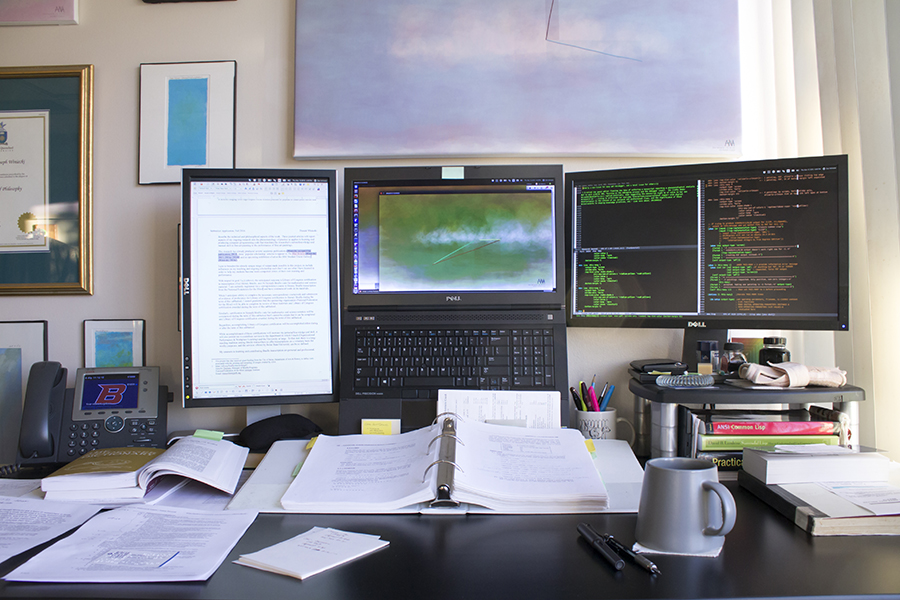
Donald Winiecki is a professor at the College of Engineering at Boise State University, a sociologist, and a former illustrator. He has created ANA, a software program that creates digital artwork from code that replicates his own creative style, color choices, and subject matter. This experimentation in the digital art realm has become the brain-child of his fascination with phenomenology and a great resource in his endeavors as an instructor. He leaves us with, “You have to believe in what you do even when it is hard and even when it doesn’t seem too rewarding.”
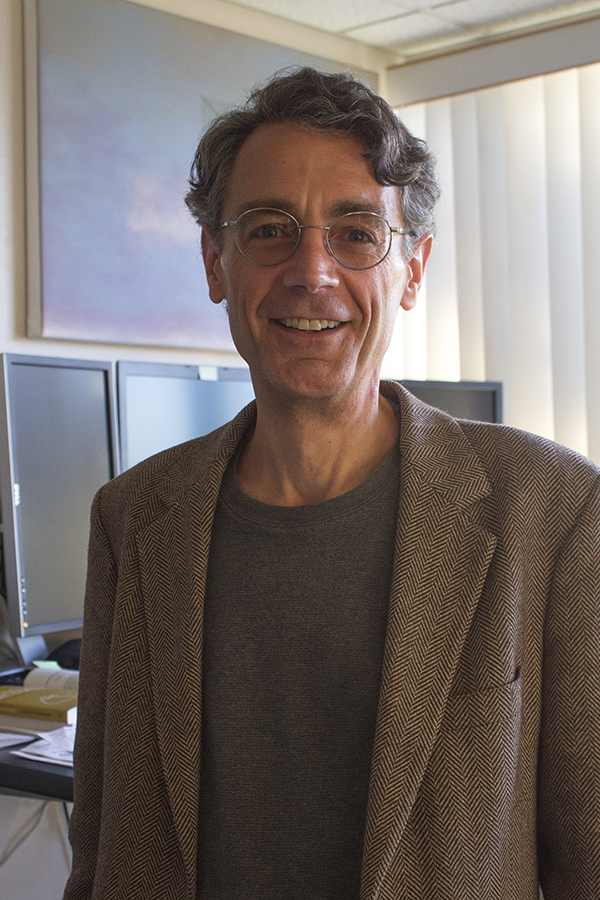
Can you describe your role in the community?
I am a professor at the College of Engineering, at Boise State University, in a department called Organizational Performance in Workplace Learning which is more about engineering environments so that people can perform better in the workplace. The courses I teach are primarily research related courses where you go into an organization and you assess what’s going on and (how) the environment, the rules, the tools, and the resources. The incentive systems aren’t quite aligned with people so they can’t get done what they are expected to get done. Almost all of the time you can tweak it a little bit, to improve it. That goes along with my status as a sociologist. I am an academic sociologist and I spend a lot of time hanging out inside of organizations studying how systems work, or don’t work. Also, I do guest lectures for the engineers in their courses and that has to do with ethics and morality in professional practice because they don’t have a lot of that in their cohort of highly technical courses.
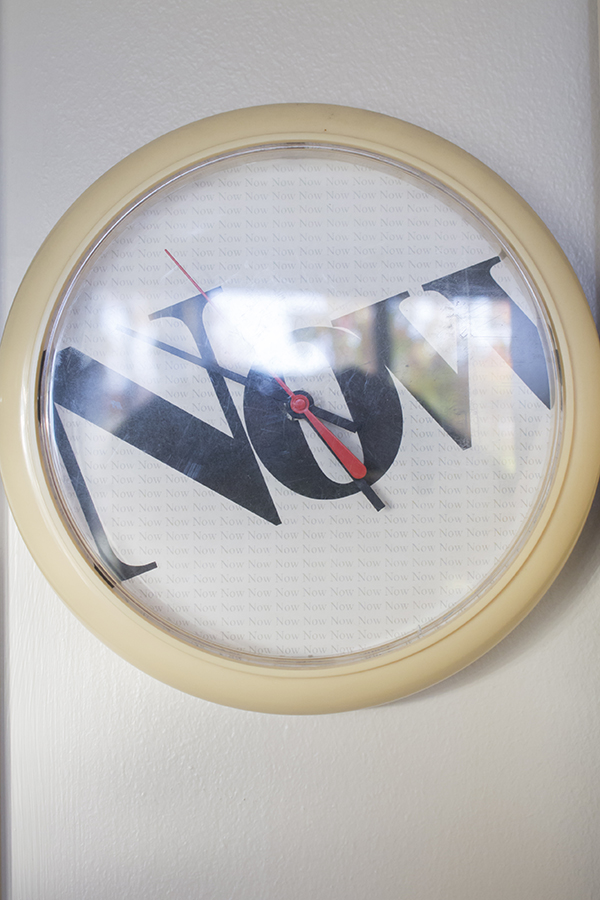
What you are working on right now?
I call the software ANA, which is an acronym that stands for ANA is not ARON. One of my acquaintances designed software that he calls ARON. I am following his lead, although I am doing it very differently. He is much better known than I am and so people would say, “You are doing something like Harold Cohen is doing with ARON.” Maybe it is close, but only conceptually. ANA is not ARON. That is my punch line. I can gesture to his work and say that I am not doing that specifically, but I am doing things conceptually similar to what he is doing. In addition to that, I have an interesting code as a way of encapsulating more complex content.
What the grant is funding is the production of the paintings, the printing of the works. When it comes to the actual development of the software, I have done that on the side and as part of an ongoing research project that I am conducting in what is called the phenomenology of practice. Phenomenology is a philosophical orientation to research that has to do with your awareness of the environment you are in and your responsiveness to your environment in creating what amounts to a little microcosm of resources, knowledge, and skill that function together as a system effectively. You actually build a little working system to create what you want to create. That doesn’t mean that you are trying to overpower the environment, it means that you are trying to learn the attributes of the environment that help you get done what you need to get done. Then you modify yourself, your expectations, and your practices so that everything works in a very sympathetic way. Any professional tries to achieve that kind of thing even if they don’t know phenomenology. It is just part of being a competent member of any system is to learn the system, your role, the tools, the rules to the point where you can fluently get things done. I am doing that through taking what I already know how to do, which is draw and paint. I used to be an illustrator—one of my prior jobs was illustration. I was kind of good at it and I was very fluent at it; I could get a lot of things done fairly quickly. That is not to say that I am the greatest in the world, but I had those skills. I have an interest in trying to find out how you acquire that fluency so that I can help my students acquire it.
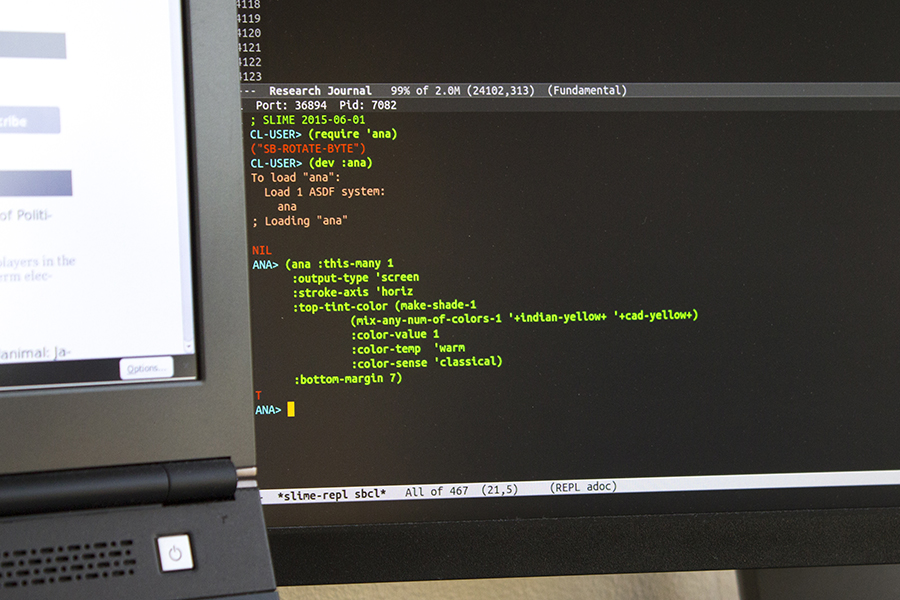
How long have you been working with ANA creating these images?
The first image created by ANA was in 2013. I made a lot of progress in that first year, but the second year was much slower because I was getting into more nuisances of things. I am still in that very slow stage, but I am guessing that after this semester is over with, I am seeing I will have a little more time to work on it and I am hoping to make some bigger breakthroughs over 2016. I spent about a year re-teaching myself programming before 2013. I actually had to go in and find a lot of books and teach myself how to program again.

Can you talk about your subject matter choice for the work?
For the most part, sky is my thing. I chose sky in the first place because it is an abstraction that has very distinct roots in reality. Sky never looks the same, so it is always an abstract concept, but it always contains certain concrete attributes. There is always some blueness to it, even on a cloudy day. Even the grey of a very dense cloud layer has some blueness. What I like about sky is that I don’t have to be accurate in a representation of a cup or a saucer or a nose or something like that. I am at more liberty to experiment with pure color and yet it still has an evocative representation to sky. It satisfies my desire to have something realistic, but it also satisfies my artist geek in wanting to be able to do something more abstractly. I am able to split the difference there. Over time, I will probably get into water which is also another detailed abstraction, but it is a much more defined abstraction than is sky. For now, sky works as a good tool to think with.

Can you describe how the program works?
I defined a database of artists paint colors. I had to define the paint as an artist would know it, but I had to define it in terms that the computer could deal with. It is literally a database of names and numbers, each of which represents a different quality. Certain colors just feel hot, some colors feel cold, and its transparency or opacity as it interacts with other colors. The software, when I tell it to make a dark background or if I want to make something dusky it will have this quality and that quality and it reaches into its database and plucks these things out and puts them into another list. It creates a palette just like an artist will squeeze out colors when he or she is going to paint a dusky sky. It does that step. I have had to figure out what I do when I select colors. I look for these qualities, I define them this way, I lay them out on my palette. Then when I want to paint a dusky sky, do I start with a light or dark color or a transparent or opaque color? I literally sat down with paint and I asked how it is done. Once I’ve created a list of what I would do then I can write code that plucks from this list that the software created. The program then has to apply it, but how does it apply it? If I am applying it to a sunset or sunrise, it will apply the paint in a very horizontal way because when you look at the sunrise or sunsets then you see striations of colors that are usually more or less parallel to the horizon, but if I am describing a rainy sky, it doesn’t work as well. The paint strokes will have to be more vertical to go along with the tearing that you see happening with the clouds and the rain and the way that light comes through the rain and the clouds. I can tell the machine if it is rainy, now your brushstrokes are vertical versus a nice calm placid sky, your brushstrokes are more horizontal. From horizon to apex, whatever that is, you are going to see a graduation of color. Usually there is a very light whitish twinge near the horizon and as it gets higher up towards apogee, towards ninety degrees up, it gets darker and darker. Well, it gets darker towards forty-five degrees and then starts changing again. It usually starts changing in color, not just darkness. So, if I have a very vertical format it goes from a fairly blue at the bottom to a yellowish at the top. Often you see that yellowish happen around dusk. Sometimes there are reds in there too. There is sometimes red in just below the yellow. The machine decides, based on some rules that I program, depending on the height of the sun, what time of day it might be, the actual angle of the sun, you are going to have different colors.
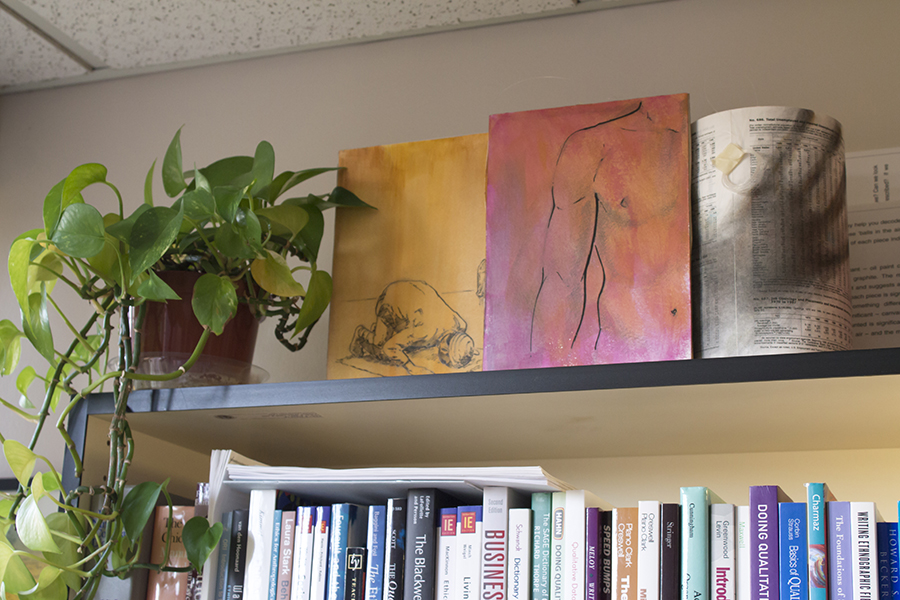
Is the program purely automated or do you make decisions?
I set up circumstances. Right now I have to go into the code itself and change some things. I haven’t automated some of the decisions it makes, I still have to be there for some of it. Once I make those tweaks, I can then just go to the command line and tell the machine, “Run ANA.” Using the parameters that are now in it, it now does that and creates a painting or creates ten paintings. It decides what the format is, the x and y coordinates of the canvas and paints. It always paints with one or two clouds in the sky. Sometimes it is a dark and nasty sky, sometimes it is a real friendly sky, and sometimes it is misty depending of the parameters that are plugged into it. I can manipulate those things manually now. The next step is to automate those things. I can tell the program to give me a rainy sky, literally like that and it will do it. The machine will take my terms and define color, the application of color and angle of brushstroke based upon my command, but I haven’t gotten there yet. I still have to do a lot of that by hand. As I do it by hand, I am learning in an intellectual way how I would create a rainy sky, cloudy sky, or dusky sky because I literally have to go in and make choices that I think represent that. If the painting that it produces, hermeneutically, validates my hypothesis of the colors and brush strokes that are necessary, then I can write a function for the software that actually makes that decision. That is the next step. I might get there before the show or I might not because I do have a lot of other things to do. That is part of the process.

Would you say that ANA is producing work that is based on your personal aesthetics?
Absolutely and that is part of the neat thing. When I talked to Harold Cohen about ARON, he says it does what he wants it to do because he is programming the rules that he would use when he was making abstract art. He was a world renowned artist in the sixties before he started doing this stuff, so he was really well versed in the pointy headed, intellectual aspects of art. He says he doesn’t want to show anyone his code because he says that is who he is and the way that he thinks about art. If you want to do it, that is great, but write code about what you know and what you value in art. That is what ANA is to me. It is very much trying to represent my aesthetic, my color choices, the way I think about art, where Harold’s work is about what he thinks about art.
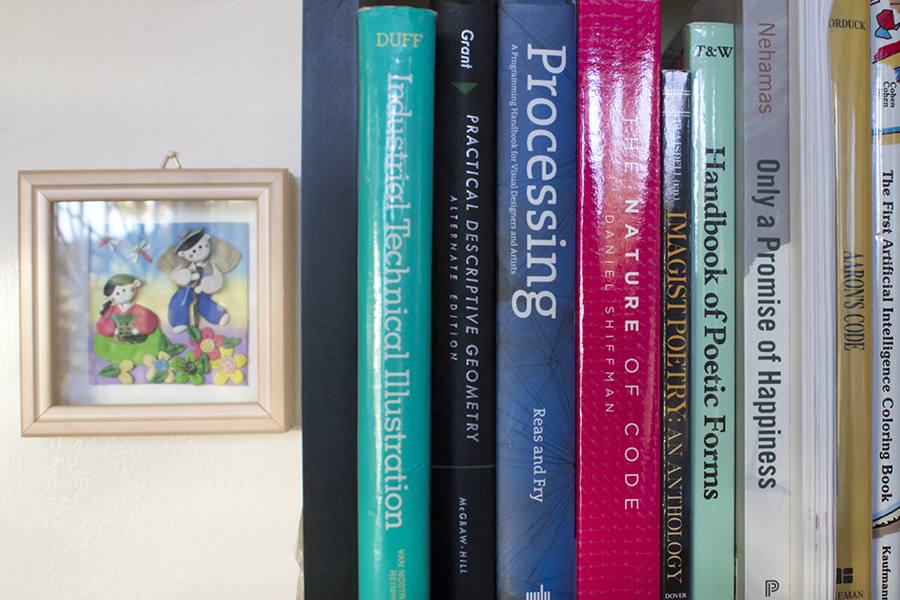
So ANA is not producing artwork based on its own created aesthetic, it is based on your aesthetic?
Yes. I give it the rules. ANA will never be artificially intelligent and I don’t want it to be. I don’t want it to mimic human decisions. I want it to reflect my values. That is part of the intellectual phenomenological aspect because I am trying to figure out what I know about art and then build it into ANA. I don’t want to replace myself; I want to express myself and what I know in a different way.
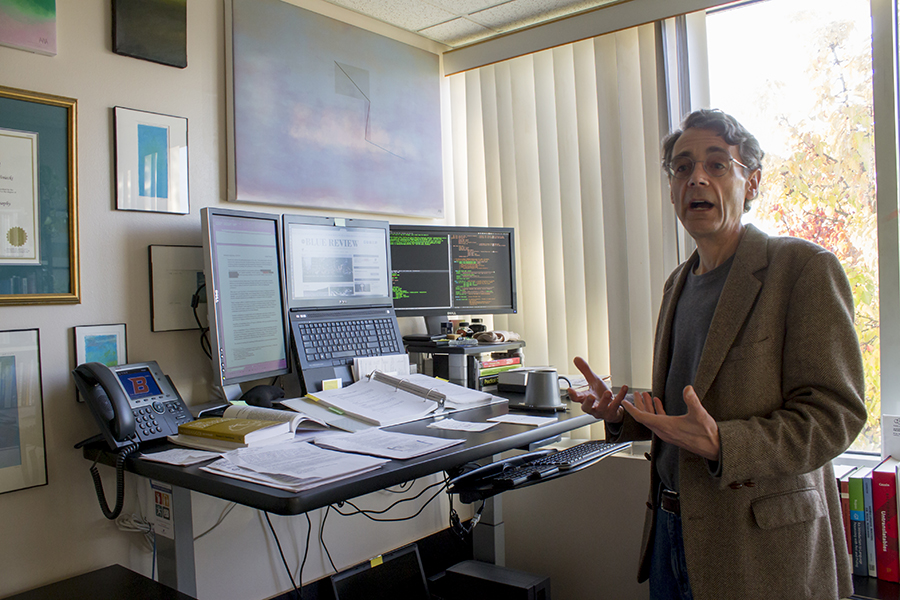
What are your opinions of the arts community here in Boise?
I haven’t gotten out much into it and I think that is something that still scares me about art, is being in the public with my art. I think I am a little more introspective and shy about that aspect of art. I am not really a show person. One-on-one I think I can handle myself pretty well, and in the classroom I can, but when it comes to a crowd, I get really scared. I tend not to get out when I know there is a happening. I will go visit the art when I know no one is going to be there. So, to me viewing art or reading poetry is a very solitary process. What we have here in Boise, kind of facilitates that. It appears there is not a really big, active and public arts community here even though we do have some really good artists. It seems like most of the time they have to go somewhere else to show their art and to get some attention. For me, what I do, what Boise is, seems to be okay. Maybe if this work makes a big splash and becomes more popular, then I’ll have to change the way I think about that, but right now, not having to face the public that much is a good thing.
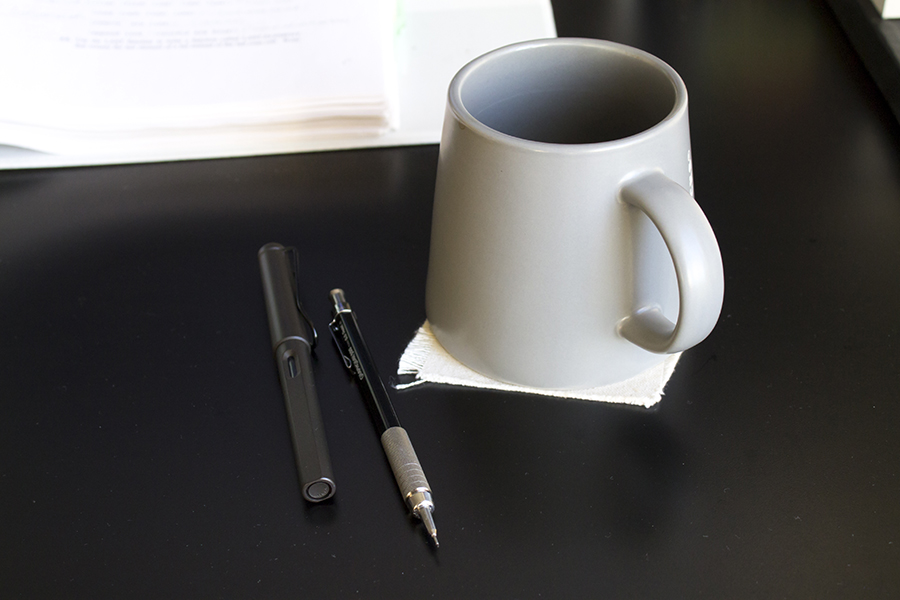
Are there any resources that you can recognize that are lacking here that would help you be more successful?
Boise is a really interesting place for an artist. In the first place, you have to be more resourceful. There are not a whole lot of others that you can hang around with and be inspired by and challenged by locally. So, you have to be a little more self-sufficient. That kind of suits my demeanor, but for others who might thrive on more of the social aspect of art and sharing, learning, and partnering with others, I can see how there might be some things missing here, but the people that I know as artists are fantastic, here at the Art Department. We have world renowned artists here. They really are fabulous people. It is surprising that they don’t get the attention they deserve here in Boise. The computer science department here helps me out when it comes to programming, hardware and software issues. Printing the art is a resource that I also have right here. I have developed kind of a local community here that helps me get done what I need to get done and that is good enough for me.
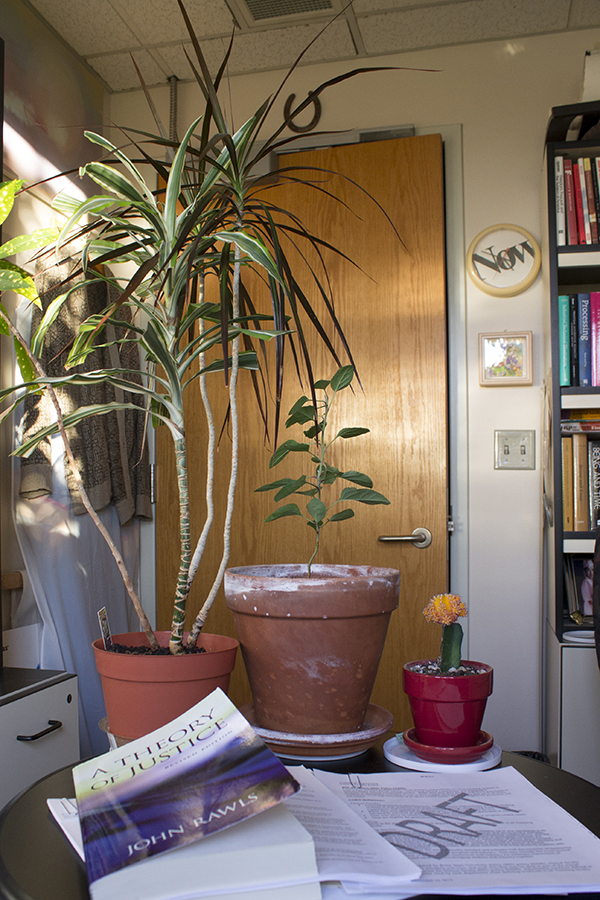
Any words of advice for those who choose a similar path that you have?
Believe in what you want to do even if you don’t get immediate reward from other people. Believe in what you do and be committed to it. Stick with it. That doesn’t mean that you have to quit your day job. I have a day job because I don’t make a living with this stuff. I have found a way to make it fit into what I do, intellectually and as an instructor. You have to believe in what you do even when it is hard and even when it doesn’t seem too rewarding.
Read more about Donald Winiecki on the BLUE REVIEW
The Philosophy Behind ANA, 04.19.16
Coloring Outside the Lines on Purpose, 03.15.16
Introducing ANA (ANA is Not Aaron), 12.15.15
Creators, Makers, & Doers highlights the lives and work of Boise artists and creative individuals. Selected profiles focus on individuals whose work has been supported by the Boise City Dept. of Arts & History.